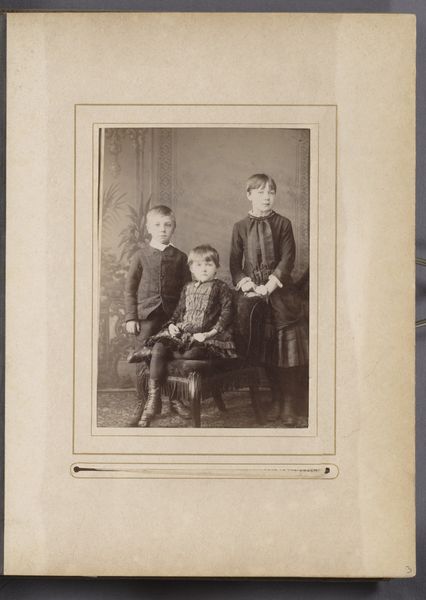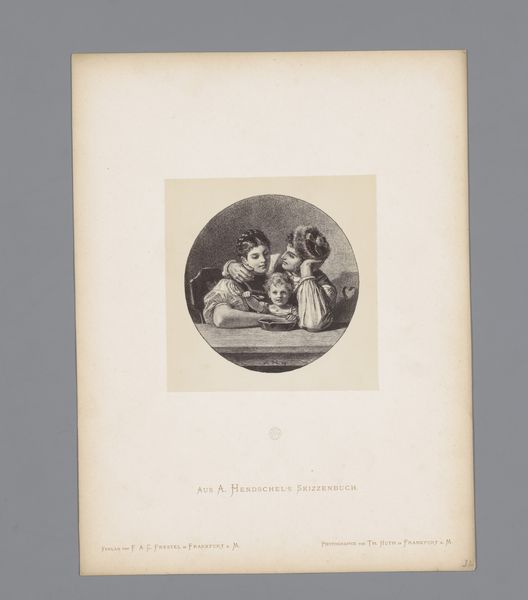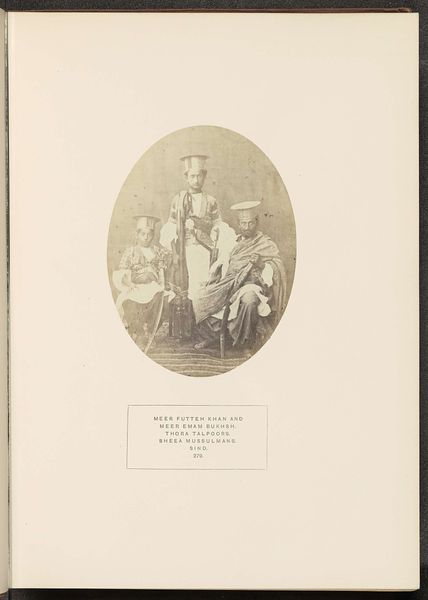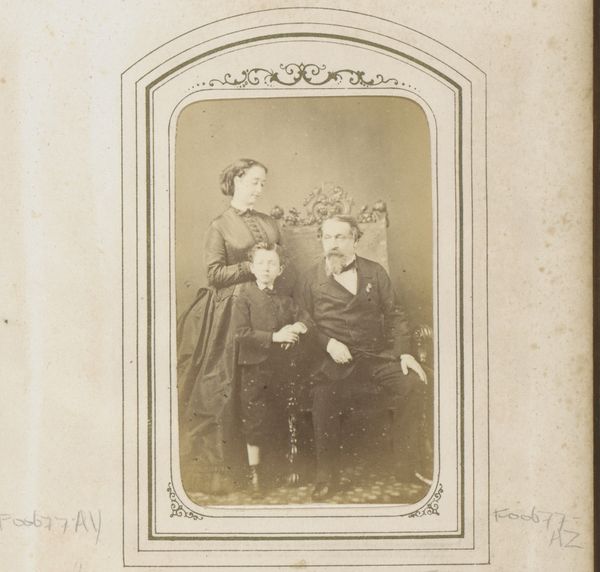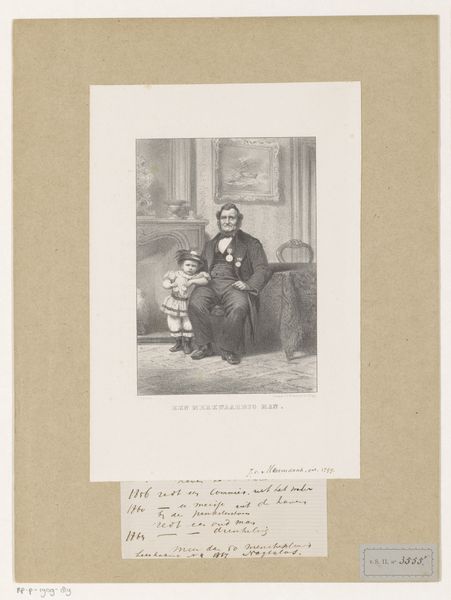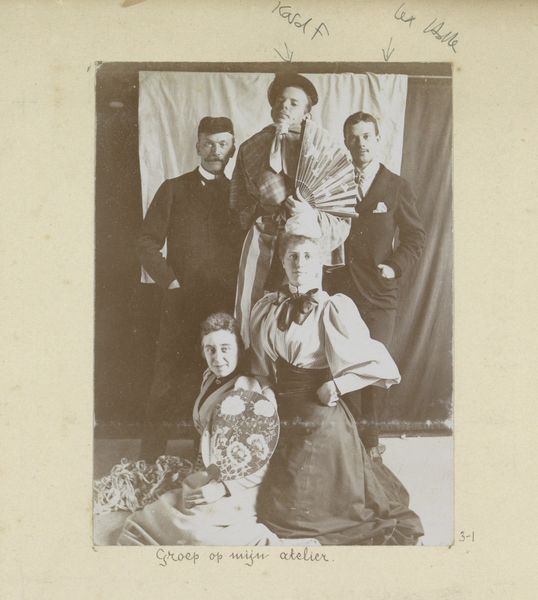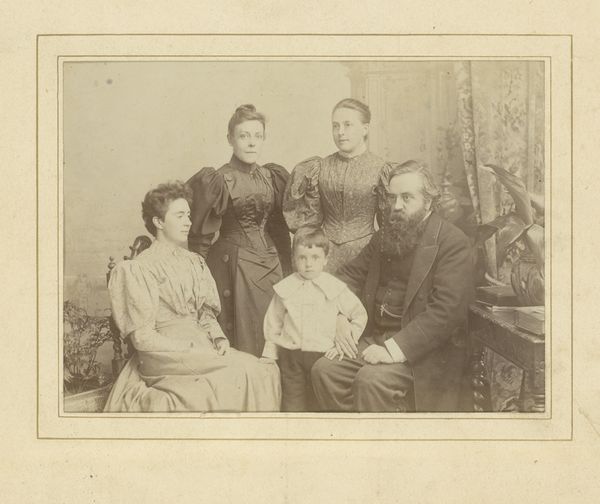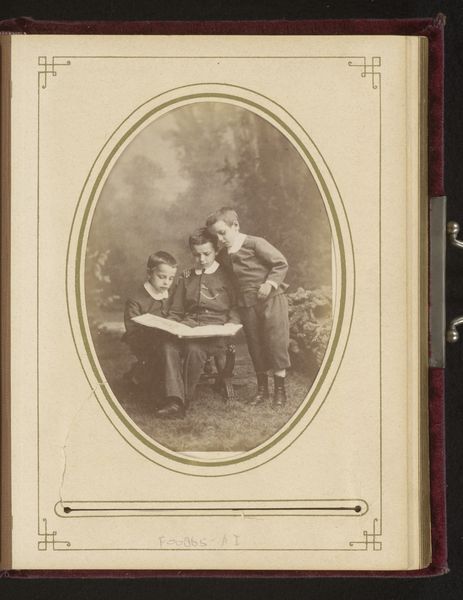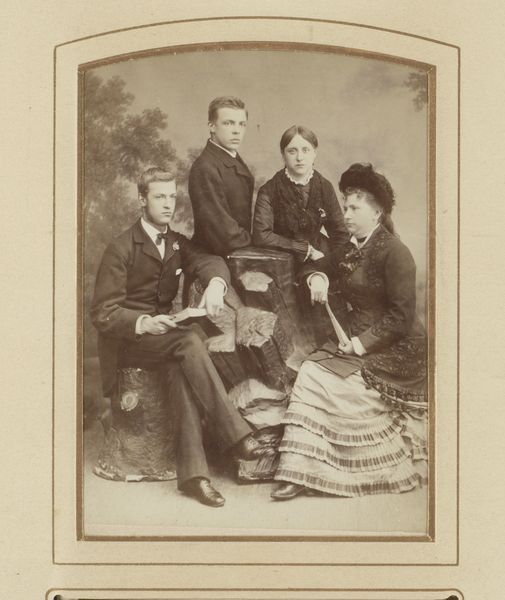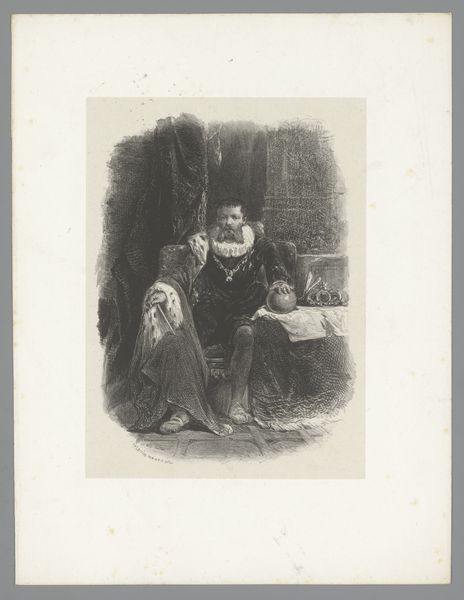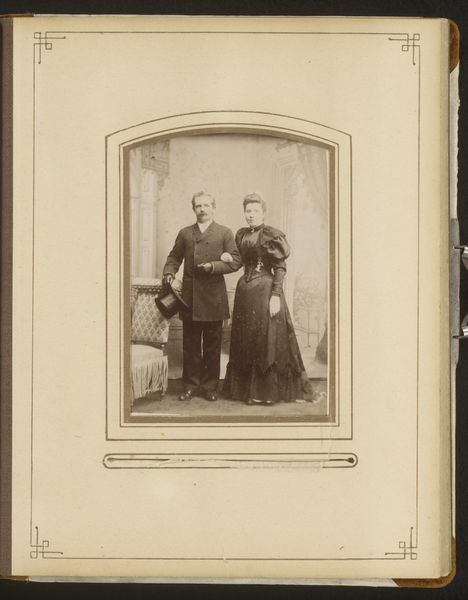
Josefine Moos-Levi, Hermann Moos, Else Wachenheimer-Moos, Willy Moos en Arthur Moos in een familieportret, 1895-1903, Stuttgart 1895 - 1905
0:00
0:00
daguerreotype, photography
#
daguerreotype
#
photography
#
group-portraits
#
genre-painting
#
realism
Dimensions: height 160 mm, width 230 mm
Copyright: Rijks Museum: Open Domain
Curator: What strikes me is how wonderfully rigid everyone appears in this photographic portrait; a poignant stiffness that somehow captures an era. Editor: Precisely! It’s as if we’re peering into a time capsule. This daguerreotype captures the Moos-Levi, Moos, and Wachenheimer-Moos family from Stuttgart, sometime between 1895 and 1905. Look closely; it’s titled "Josefine Moos-Levi, Hermann Moos, Else Wachenheimer-Moos, Willy Moos en Arthur Moos in een familieportret." A glimpse into their world. Curator: Family portraits have a language of their own. There is an intimacy fighting a war with forced tradition! The setting feels like a stage, doesn’t it? Posed like mannequins and holding in the weight of a future unknown to them... Editor: You’re right; it's heavily staged. Realism was shifting how the European middle class liked to represent themselves, as well as express an evolving cultural ideal during times of rising industrialization and sociopolitical conflict. Curator: I sense a tension; is that too romantic of an assessment? The photograph whispers a family's aspirations... Their hidden struggles beneath that facade. What do you notice? Editor: I find myself reflecting on the socio-economic position of this family; this image has less to do with a personal "story" and more to do with its expression as a visual signifier of bourgeois class. In other words: their placement and posture have to do with the creation of a clear signal and maintenance of specific power structures within that historical setting. Curator: The children stand stiffly. Perhaps, they would like to run around a field; be barefooted or hold mud in their tiny hands, right? Imagine capturing these fleeting moments in an artwork these days, that’d be considered candid now. But here? Controlled! Editor: Indeed. That control speaks volumes, doesn’t it? Even something as banal as their clothing contributes toward constructing and projecting a desirable and exclusionary "ideal." It asks, who is invited to be the subject and owner of art... to see it? Curator: Makes one appreciate our fleeting phone snapshots and unfiltered Instagram stories now. Everything is documentation these days. This makes you reflect upon identity. We perform versions of ourselves; like theater actors off-stage... and on. How exhausting. Editor: Ultimately, viewing something from so long ago enables conversations and the means to consider social identity now; and also to assess progress, however gradual. The art can serve as a conduit.
Comments
No comments
Be the first to comment and join the conversation on the ultimate creative platform.
